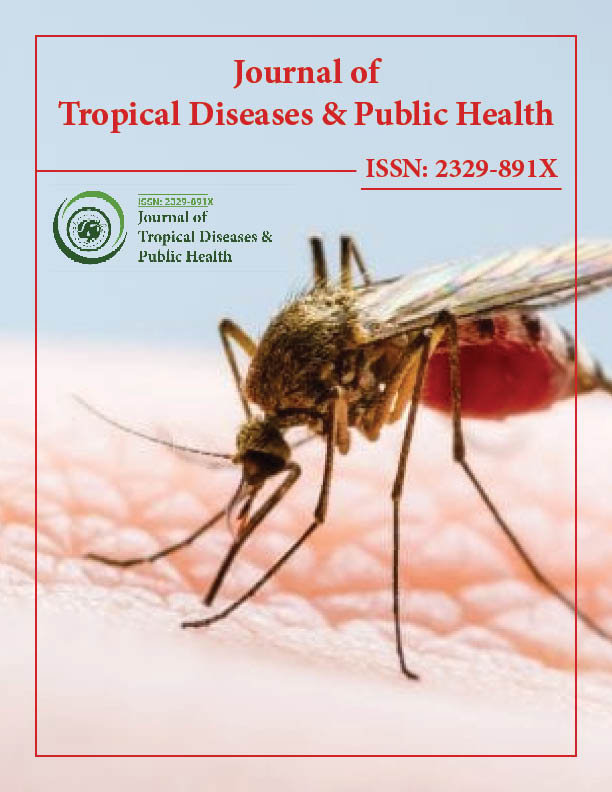Indexed In
- Open J Gate
- Academic Keys
- ResearchBible
- China National Knowledge Infrastructure (CNKI)
- Centre for Agriculture and Biosciences International (CABI)
- RefSeek
- Hamdard University
- EBSCO A-Z
- OCLC- WorldCat
- CABI full text
- Publons
- Geneva Foundation for Medical Education and Research
- Google Scholar
Useful Links
Share This Page
Journal Flyer

Open Access Journals
- Agri and Aquaculture
- Biochemistry
- Bioinformatics & Systems Biology
- Business & Management
- Chemistry
- Clinical Sciences
- Engineering
- Food & Nutrition
- General Science
- Genetics & Molecular Biology
- Immunology & Microbiology
- Medical Sciences
- Neuroscience & Psychology
- Nursing & Health Care
- Pharmaceutical Sciences
Commentry - (2025) Volume 13, Issue 1
Vector Ecology and Environmental Factors Influencing Zika Virus Transmission
Donge Fenji*Received: 24-Feb-2025, Manuscript No. JTD-25-29274; Editor assigned: 26-Feb-2025, Pre QC No. JTD-25-29274; Reviewed: 12-Mar-2025, QC No. JTD-25-29274; Revised: 19-Mar-2025, Manuscript No. JTD-25-29274; Published: 26-Mar-2025, DOI: 10.35241/2329-891X.25.13.469
Description
Zika virus is a mosquito-borne flavivirus that has emerged as a significant public health concern due to its rapid spread and association with severe birth defects and neurological disorders. First identified in 1947 in rhesus monkeys in Uganda Zika Forest, the virus remained relatively obscure for decades, causing only sporadic infections in Africa and Asia. However, major outbreaks in the Pacific Islands in 2007 and 2013, followed by a large-scale epidemic in the Americas in 2015, brought the virus to global attention.
Zika virus can also be transmitted through non-vector routes. Sexual transmission has been documented in several countries, making it unique among mosquito-borne viruses. The virus can persist in semen for weeks or even months after infection, increasing the risk of sexual transmission. Additionally, Zika can be passed from a pregnant woman to her fetus, through blood transfusion, and potentially through organ transplantation.
Most people infected with Zika virus experience mild or no symptoms. When symptoms do occur, they typically develop within 3 to 14 days of infection and include fever, rash, conjunctivitis red eyes, muscle and joint pain, headache, and general malaise. These symptoms usually resolve within a week and rarely require hospitalization. However, the major concern with Zika infection lies not in the acute illness but in its complications, particularly during pregnancy.
The Zika virus outbreak in Brazil in 2015–2016 led to a dramatic increase in cases of microcephaly and other birth defects, prompting the World Health Organization (WHO) to declare a Public Health Emergency of International Concern in February 2016. Although the global emergency status was lifted later that year, Zika remains a serious concern, especially in regions where Aedes mosquitoes are widespread and surveillance systems are weak.
Zika virus infection has also been associated with neurological complications in adults, most notably Guillain-Barre Syndrome (GBS), a rare condition in which the immune system attacks the nerves, leading to muscle weakness and, in some cases, paralysis. The exact mechanism linking Zika to GBS is not fully understood, but the association has been consistently observed in multiple countries during outbreaks.
There is currently no specific treatment for Zika virus infection. Management focuses on relieving symptoms with rest, fluids, and medications such as acetaminophen to reduce fever and pain. Non-Steroidal Anti-Inflammatory Drugs (NSAIDs) and aspirin are generally avoided until dengue is ruled out, due to the risk of bleeding complications.
Prevention remains the cornerstone of Zika control. This includes avoiding mosquito bites by using insect repellent, wearing long-sleeved clothing, using mosquito nets, and eliminating mosquito breeding sites. In areas with active transmission, public health authorities recommend delaying pregnancy and advising travelers, especially pregnant women, to avoid affected regions. Safer sex practices are also advised for individuals who may have been exposed to the virus.
Conclusion
Zika virus is a relatively mild illness for most individuals but carries serious risks during pregnancy and in some adult cases. The global response to the 2015 epidemic highlighted both the challenges of emerging infectious diseases and the importance of coordinated public health action. Ongoing research, prevention efforts and public awareness are critical in reducing the impact of Zika and preparing for future outbreaks. Strengthening healthcare systems, improving diagnostic capacity, and educating communities are essential components of preparedness and response strategies. Integrated approaches that combine vector control, reproductive health services, and public health messaging are particularly important in vulnerable regions
Citation: Fenji D (2025). Epidemiological and Environmental Determinants of Dengue Transmission. J Trop Dis. 13:469.
Copyright: © 2025 Fenji D. This is an open-access article distributed under the terms of the Creative Commons Attribution License, which permits unrestricted use, distribution and reproduction in any medium, provided the original author and source are credited.

